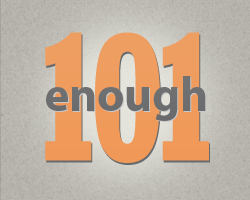
Editor’s Note: This post is intended to provide a contextual background for understanding the complex issues that the Enough Project works on. It is part of the series Enough 101.
At the beginning of 2012, the situation in eastern Congo was improving. Violence caused by armed groups was declining, and progress toward a ending the trade in conflict minerals was underway; however, the war has started to explode since then, sparked by warlord General Bosco Ntaganda’s mutiny from the Congolese army in March 2012 and the ensuing M23 rebellion. Since then, attacks, armed group recruitment, rapes, and mass displacements are on the rise. Earlier this summer, the United Nations Group of Experts on Congo published its interim 2012 report on the conflict in eastern Congo. The UN team, made up of six investigators, examined the links between armed groups, the weapons trade, natural resources, abuses of civilians, and Rwanda’s support of the M23 rebel group.
When the report’s annex was released in June 2012, controversy over Rwanda’s support of M23 justifiably grabbed headlines and international attention. But the report also outlines other major developments in the war in eastern Congo:
1. Sexual violence and attacks on civilians are rising because of new clashes between armed groups. More than 2 million people are now displaced.
In 2011, the strength of armed groups in eastern Congo was on the decline; however, violence has again spiked. The Democratic Forces for the Liberation of Rwanda, or FDLR, is responsible for raping 46 women in early 2012, and tit-for-tat retaliatory attacks on villages between armed groups and Congolese forces has displaced over 2 million people—the highest level of displacement since July 2009. Additionally, according to the Group of Experts, recent attacks have caused 30,000 refugees to flee into Uganda.
2. The new M23 rebellion, supported by Rwanda, is the main reason for the war’s escalation.
At the end of March, General Bosco “The Terminator” Ntaganda, who is wanted for war crimes by the International Criminal Court, led a mutiny from Congo’s army that became the M23 rebellion. (M23 is named for the date, March 23, 2009, that Ntaganda’s rebels had signed an agreement with the Congolese government). The Congolese government had tried to retake control of army posts in the mineral-rich Kivu provinces of eastern Congo from Ntaganda, but Ntaganda and the mutineers wanted to retain control of these areas, so they could continue to exploit gold and other mineral smuggling operations. Ntaganda was documented to have run an extensive multi-million dollar gold smuggling ring in the last U.N. Group of Experts report.
An addendum to the 2012 experts’ report states that neighboring Rwanda helped form and continues to support M23. The report states that the insurgents have over 1,000 troops and are engaged in heavy fighting with the Congolese army in Rutshuru, North Kivu province. The M23 is powerful because it is being backed by Rwanda with heavy weaponry, troops, recruits, and territory, and includes highly trained and organized fighters.
3. Armed groups are making less money from the conflict minerals of tin, tantalum, and tungsten, and the Dodd-Frank law is catalyzing reform. However, the conflict gold trade continues to thrive, and the SEC’s delay has prevented investment.
Due to the U.S. Dodd-Frank legislation, reforms to develop a conflict-free minerals trade (for the “3 Ts:” tin, tantalum, and tungsten) are moving forward and armed groups are making less money from conflict minerals than they have in previous years. The Group of Experts remains “convinced that requiring companies to exercise due diligence is effective.” However, trade in conflict gold continues; groups are smuggling the 3 Ts, and the M23 is robbing banks to generate income.
4. As the Congolese army focuses on fighting the M23, other armed groups, including the FDLR, are regaining strength and retaking strategic areas, including minerals mines.
At the beginning of 2012, most armed groups in the region were on the wane and the FDLR, which has caused the majority of the violence in eastern Congo over the past 18 years, was down to one-quarter of its size of three years ago. But as the Congolese army focuses on fighting M23, they leave a power vacuum in much of North and South Kivu, and other armed groups are taking advantage. The FDLR has gained back a majority of their most important positions and have taken over strategic locations abandoned by the army.
The Group of Experts noted they will continue to monitor the FDLR’s activities to determine how reliant they are on mineral exploitation and local commercial trading to fund their activities.
Read more: “Eastern Congo’s Armed Groups” and “Who Said What? A Guide to Understanding the Latest Report on Congo.”

